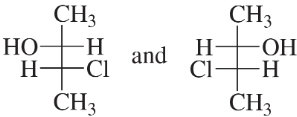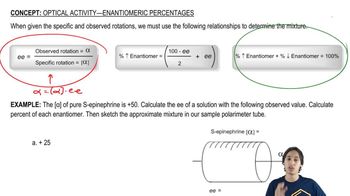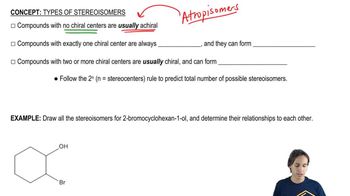a. Are d-erythrose and l-erythrose enantiomers or diastereomers?
b. Are l-erythrose and l-threose enantiomers or diastereomers?


 Verified step by step guidance
Verified step by step guidance Verified video answer for a similar problem:
Verified video answer for a similar problem:



 1:15m
1:15mMaster Introduction to different projections. with a bite sized video explanation from Johnny
Start learning